This is my first paint job and I’m not sure how far to take the sanding so I’ve attached several pics of the bed side I’m working on today. I was thinking/hoping that this may be my last round of block sanding before a final coat of epoxy in the next couple weeks, and then a final sanding and seal coat before the color in a few months when I can get back. I’ve only used Epoxy, no 2k primer, and some thin filler as needed around areas where I welded patches.
Keep in mind I want this to look as good as possible but it is my first job, will be done without a proper paint booth, and will be in a Ford Blue, not Black. I want it to look nice and flat, without scratches or noticeable waves, and at least as good as it did new. Obviously these old trucks (72 F100) weren’t exactly straight with great panel alignment from the factory…. For this project I’m not going for that perfect alignment between the panels that were spot welded together, etc.
All sanding you see in the pics was done so far with 16” blocks.
Do I need to continue blocking and have a consistent grey color over the entire surface? I have the ever so slight low spots that remain where you can still see some black, although you can see some scratches do cross-cross through the black. Additional sanding would eventually get those spots to the consistent grey, but I am trying not to break through again to bare metal…. Do these spots need a layer of glaze or is it flat enough now that my final color coat will look nice and flat in the sun?
I feel like I keep chasing these spots around as I’ve had them in previous rounds of sanding, hit with more epoxy, some glaze, more epoxy and then seem to find more in different areas…. (All rookie mistakes/issues I assume.). Anyway, I’m trying to get some input on where I need to be with this. A friend is already telling me that it was ready for color long ago, and I’m such a perfectionist that I’ll never be happy. I would love to do work like @theastronaut but I’m not sure I have the years left for that, and for this one I’ll be happy to get back to a factory look…
Guess I should add that I know if I drop down to a 12” block that I would quickly level out those spots in question… Just wasn’t sure that’s what I I should be doing at this stage or if I should be going for flatter with the longer block.
thanks
Keep in mind I want this to look as good as possible but it is my first job, will be done without a proper paint booth, and will be in a Ford Blue, not Black. I want it to look nice and flat, without scratches or noticeable waves, and at least as good as it did new. Obviously these old trucks (72 F100) weren’t exactly straight with great panel alignment from the factory…. For this project I’m not going for that perfect alignment between the panels that were spot welded together, etc.
All sanding you see in the pics was done so far with 16” blocks.
Do I need to continue blocking and have a consistent grey color over the entire surface? I have the ever so slight low spots that remain where you can still see some black, although you can see some scratches do cross-cross through the black. Additional sanding would eventually get those spots to the consistent grey, but I am trying not to break through again to bare metal…. Do these spots need a layer of glaze or is it flat enough now that my final color coat will look nice and flat in the sun?
I feel like I keep chasing these spots around as I’ve had them in previous rounds of sanding, hit with more epoxy, some glaze, more epoxy and then seem to find more in different areas…. (All rookie mistakes/issues I assume.). Anyway, I’m trying to get some input on where I need to be with this. A friend is already telling me that it was ready for color long ago, and I’m such a perfectionist that I’ll never be happy. I would love to do work like @theastronaut but I’m not sure I have the years left for that, and for this one I’ll be happy to get back to a factory look…
Guess I should add that I know if I drop down to a 12” block that I would quickly level out those spots in question… Just wasn’t sure that’s what I I should be doing at this stage or if I should be going for flatter with the longer block.
thanks
Attachments
-
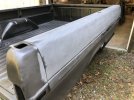 4DB8C8F3-BCC7-4C12-84F7-29CC4F53D6D6.jpeg174.4 KB · Views: 111
4DB8C8F3-BCC7-4C12-84F7-29CC4F53D6D6.jpeg174.4 KB · Views: 111 -
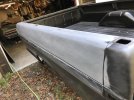 6AB481E3-BB9C-44CE-BDFB-099CDA6E0D48.jpeg167.2 KB · Views: 111
6AB481E3-BB9C-44CE-BDFB-099CDA6E0D48.jpeg167.2 KB · Views: 111 -
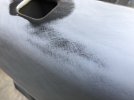 7F7EEEB9-87C9-4FCE-AEF8-D860AE97E8F9.jpeg116.8 KB · Views: 109
7F7EEEB9-87C9-4FCE-AEF8-D860AE97E8F9.jpeg116.8 KB · Views: 109 -
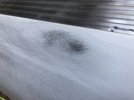 A6F44174-15BF-4802-92BE-FE4A02BA46E6.jpeg105.2 KB · Views: 109
A6F44174-15BF-4802-92BE-FE4A02BA46E6.jpeg105.2 KB · Views: 109 -
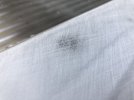 A4BAE52A-F1B5-4F55-8601-FB0C7644B6DC.jpeg101.9 KB · Views: 118
A4BAE52A-F1B5-4F55-8601-FB0C7644B6DC.jpeg101.9 KB · Views: 118 -
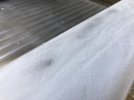 FF98293E-688B-4BBB-8374-2173702F706A.jpeg97.7 KB · Views: 119
FF98293E-688B-4BBB-8374-2173702F706A.jpeg97.7 KB · Views: 119 -
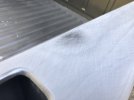 39E96088-4E79-4493-8329-D6D2B7A5DE17.jpeg89.6 KB · Views: 106
39E96088-4E79-4493-8329-D6D2B7A5DE17.jpeg89.6 KB · Views: 106 -
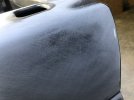 B8EC268E-5E1D-4901-A0CD-91AA9F24093B.jpeg136.6 KB · Views: 112
B8EC268E-5E1D-4901-A0CD-91AA9F24093B.jpeg136.6 KB · Views: 112
Last edited:
